Table of contents
The advent of the Industrial Revolution.
In the nineteenth century, industrialization began in Europe. Factories and trains appeared everywhere. Many people moved from the countryside to the cities to work in the new factories. The industrial revolution also had major consequences for Amsterdam.
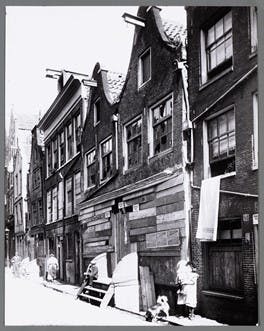
A dilapidated house on Batavierstraat (Jewish quarter)
Due to the large influx of workers, the number of inhabitants of the city doubled. Because of the shortage of houses, it was not possible to provide all these people with a house. Many neighborhoods such as the Jewish quarter (around the Waterlooplein) and the Jordaan became overcrowded and dilapidated.
Extreme poverty
Life in Amsterdam was not a pleasant experience for many people at the time. The differences between the classes in society were gigantic and existence at the bottom of the social ladder was terrible.
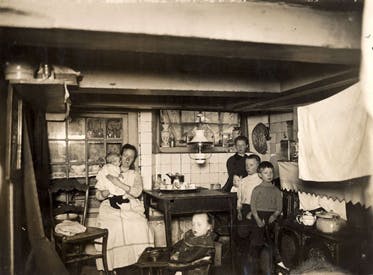
A working-class family in a basement dwelling on Nieuwe Spiegelstraat.
The lower strata of the population, especially workers, often lived in extreme poverty, and lived in poorly maintained and dark basement dwellings.
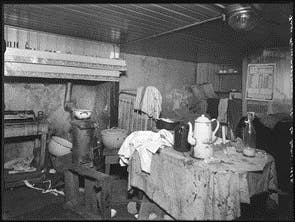
A slum dwelling in Korte Koningsstraat. Source: Beeldbank Amsterdam
Because many families lacked sufficient sanitary facilities, many neighborhoods turned into a breeding ground for diseases. (see pictures 1, 2, 3,4)
Amsterdam develops itself.
Due to these poor social conditions, Amsterdam began to develop in the nineteenth century in terms of urban planning and social aspects.
Samuel Sarphati (1813-1866), for example, advocated for a garbage collection service and cleaner neighborhoods for workers. We now primarily know him from a monument in Sarphatipark.
Cultural and recreational facilities such as the Vondelpark (1865), the concert hall (1888), the Central Station (1889), and Artis (1883) were also built.
Expansion plan by Niftrik (1867)
The final important task was to solve the housing shortage. It was decided to expand Amsterdam. City engineer Jacobus van Niftrik from 1867 was the first to make a plan for this.
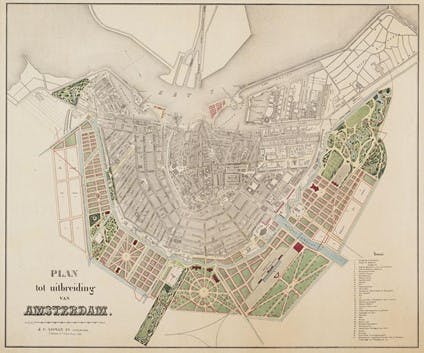
The expansion plan by Niftrik. Source: Beeldbank Amsterdam
Niftrik's plan was mainly focused on the construction of various workers' districts. There was also plenty of space for greenery, and large squares and boulevards were supposed to give the workers' districts character. The city expansion would be laid out as a half-circle around the old city center.
Location of the central station
In his plan, van Niftrik had also drawn a Central Station, as Amsterdam did not have a Central Station until 1889. Van Niftrik's idea was to build the Central Station where the Sarphatipark is now. On the map, you see the spot between the 2 large parks with star shape.
Unaffordable
If you take another good look at Plan Niftrik (1866), you may notice that the plan does not really correspond with the map of Amsterdam as we know it today. This is correct, the plan was simply too expensive to be implemented. The history of De Pijp already started unaffordably.
Plan Kalff (1875): the Amsterdam where we now live.
Fortunately, there was the alternative plan by urban planner Jan Kalff. Plan Kalff was somewhat different. There was much less space for greenery, and the Sarphatipark was built where according to van Niftrik the Central Station had to come.
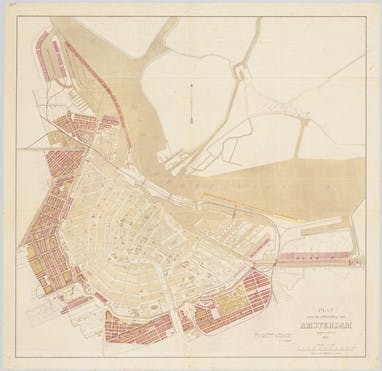
Plan Kalf (1875). Source: Beeldbank Amsterdam
The drawn-in streets were narrow and the closed block of buildings (four street walls containing a courtyard) was the dominant building type (image of the closed block in De Pijp). Plan Kalff would mean the construction of the Dapperbuurt, the Kinkerbuurt, and De Pijp as we know them today, among other things.
The contemporary Pijp
The construction of De Pijp, which officially was called neighborhood-YY, was part of the city expansion known as the 'nineteenth-century belt'. The name 'neighborhood YY' came about because Amsterdam was divided into 50 neighborhoods in the 19th century, which were identified by letters.
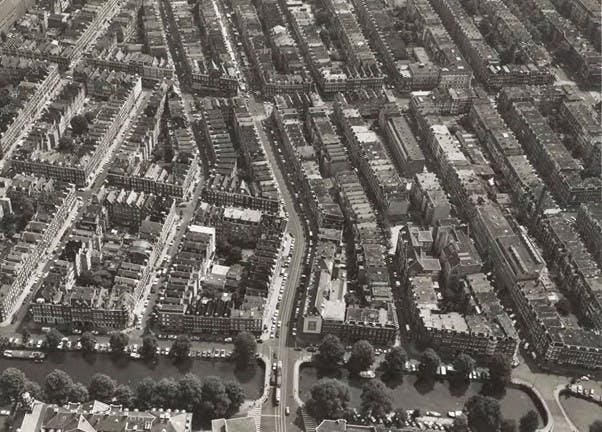
Closed building blocks on the Ruysdaelkade and Albert Cuypstraat.
De Pijp is said to owe its contemporary name to its function as a 'flow pipe'. Where people moved through the proverbial 'Pipes' (van der Helst-, the Ferdinand Bol-, the Hemony- and the van Woustraat) towards the old city center. Nowadays, De Pijp is a hip and multicultural district, which with its plethora of cafes, bars, and eateries is the perfect place to have a cozy Friday evening.
More:







